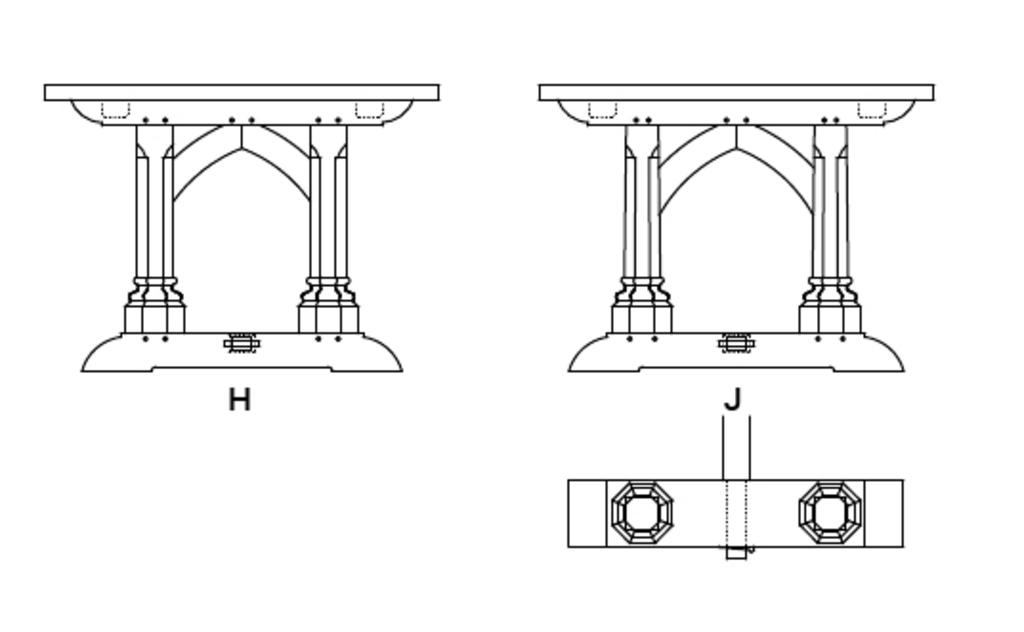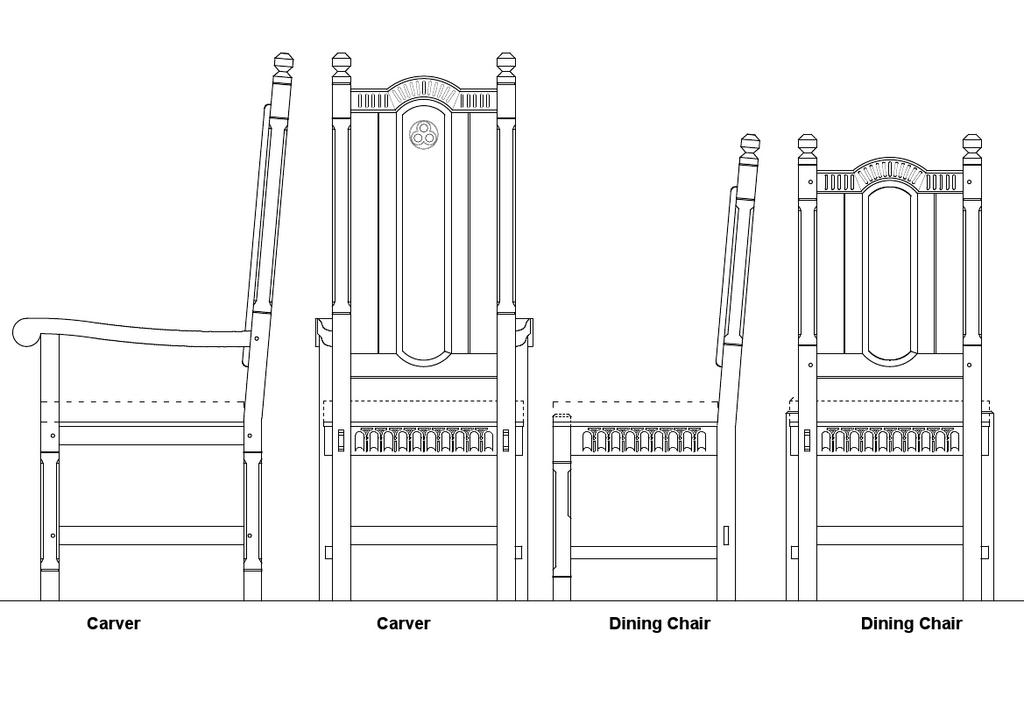Hi Mike
Sorry I'm a bit late on this one, but I'd favour design F.
Here are my reasons:
It's the best match for the chairs.
A table with a leg at each corner is the fundamental, proper type of table. It's stable and strong. You can eat off it, you can dance on it, there's no risk of it tipping over. It's even stronger if the legs are braced lower down, as they would be, and made of hefty oak.
Although your first row of designs are attractive, and a bit like roof construction, they are less table like. And I don't mean this as a slight at all, but I suspect you might want to make them just because you can do the more complicated angles and curves. (Hell, if I had your skills, I'd want to make them, just for the satisfaction of being able to.) But they may be even heavier than a big heavy oak table needs to be, and so a bit less practical in the end.
Casting around to add a few more options into the mix, I found these two, from the book "Furniture in England, The Age of the Joiner" by Wolsey and Luff.
This one is described as mid sixteenth century and has legs which are chamfered rather than turned, like you mentioned for your design E (though oddly, the centre back leg is different). It shows that boldly chamfered legs can look rather good; I suspect that you would enjoy making them.
I noticed that it has no overhang at the end, so would only suit people sitting at either side - I think this is because it was made for use with a pair of long benches rather than individual chairs.
This one does overhang, and leaves the floor clear for chairs, in a way which will probably be ok if you don't need the long stretchers at floor level to keep the rushes under control.
It's described as late sixteenth century and comes from Wardour Castle in Wiltshire.
I hope this helps; I'm sure the results will be impressive.










































